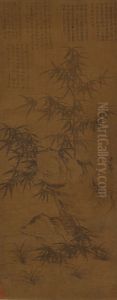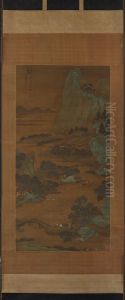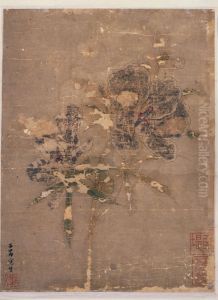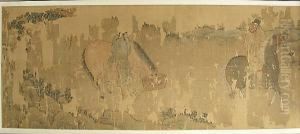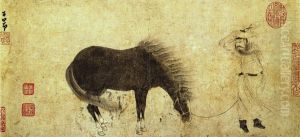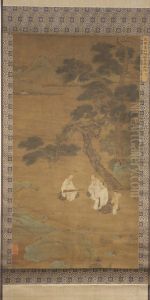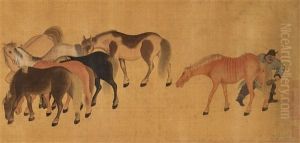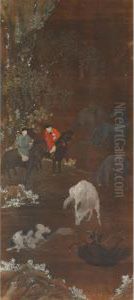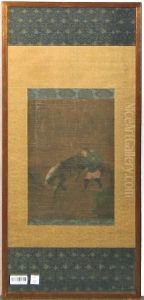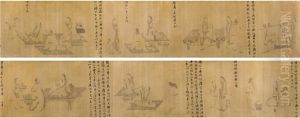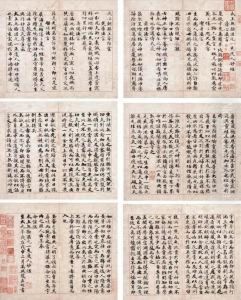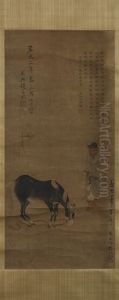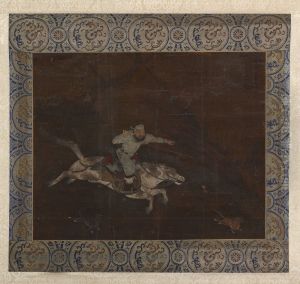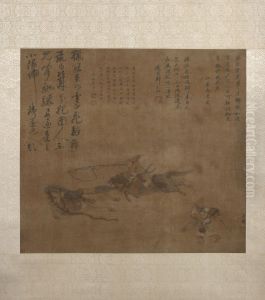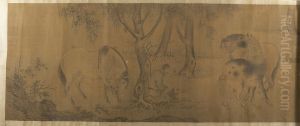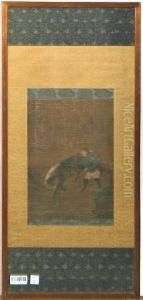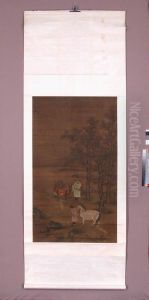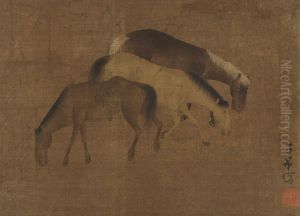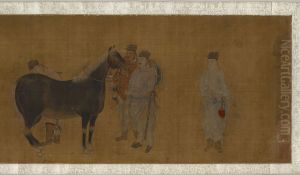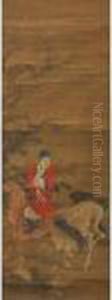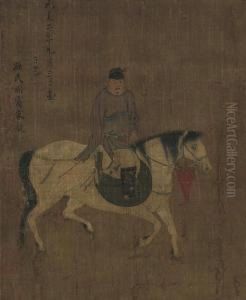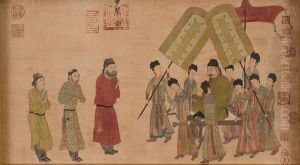Zhao Mengfu Paintings
Zhao Mengfu was a Chinese scholar, painter, and calligrapher during the Yuan Dynasty. Despite the fact that he was of Song royal descent, he served the Yuan dynasty, which was established by the Mongol invaders, in a prominent position. His decision to serve the Yuan court was criticized by some contemporaries, but Zhao justified it as a means to preserve Chinese culture and arts during a time of foreign rule. He was also a member of the Academy of Scholarly Worthies and worked in the Hanlin Academy, where he had access to a vast collection of artworks and historical documents. Zhao Mengfu was not just a government official; he was also an accomplished artist and is often considered a reviver of the classical painting styles of the Song and Tang dynasties. His calligraphy and painting style emphasized simplicity and elegance, moving away from the ornate styles that were popular in his time. He was particularly renowned for his landscape paintings and his horse paintings, which were infused with a scholarly and refined aesthetic. Zhao's work had a profound influence on later Chinese art, including both the literati painting tradition and the development of the Wu School, and his calligraphy was highly revered by subsequent generations. Throughout his life, Zhao Mengfu was also an avid collector of ancient artworks and a proponent of the theory of art, writing several treatises on painting and calligraphy. His writings have been influential in shaping the principles of Chinese art criticism. Zhao Mengfu's legacy extends beyond his own works; he had a significant impact on the development of Chinese art, particularly through his role in redefining the artistic values of his time and his influence on later painters and calligraphers.
